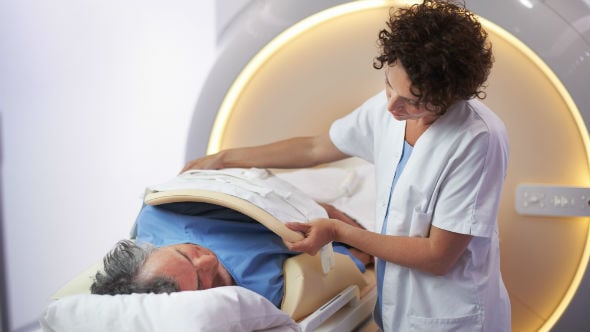Using sound waves to zap away cancer
Last summer, the world’s largest sunshade was draped over a 37-floor skyscraper known as the ‘Walkie Talkie’ in London, in a bid to dampen its notorious ‘death ray’.
Owing to the shape of the building, it produced reflected rays of light six times stronger than direct sunlight, producing temperatures of 110 degrees centigrade at the beam’s focus, melting paintwork on nearby cars. Imagine this power being harnessed in the form of sound waves – melting cancers away by zapping them with ultrasonic waves. It may sound like science fiction, but it is already happening now.
Ultrasound consists of high-frequency sound waves and is probably best known for its role in imaging unborn babies. It can however be used to supply focused energy in the form of heat in a technique called high-intensity focused ultrasound (HIFU). Just as the Walkie Talkie building acted as a magnifying glass, focusing the sun’s rays, the energy from HIFU can be focused and used to selectively target tumour tissue. An ultrasound transducer, which produces pressure waves 10,000 times greater than those used for diagnostic ultrasound, is positioned outside the body and the energy then passes through skin and other tissue. The cells at the target site are killed instantaneously by rapid heating, with temperatures reaching over 60 degrees centigrade in less than a second. Since only cells lying in the focus are heated, there is minimum damage to the surrounding healthy tissue. One of the major advantages of HIFU is that surgeons can treat tumours non-invasively, and focus on tumours deep within the body – such as kidney and liver cancers – without having to make a single surgical incision.
Leading the HIFU team here at the ICR is Professor Gail ter Haar, who has been at the forefront in developing the technology. Her team built the prototype HIFU clinical device at the ICR, and with The Royal Marsden, we were the first in the world to treat cancer using this technology. The technique has since been developed as a treatment for prostate cancer.

Professor Gail ter Haar is now collaborating with Professor Nandita deSouza – Professor of Translational Imaging at the ICR, and Honorary Consultant at The Royal Marsden – on a clinical trial that uses magnetic resonance image-guided HIFU to alleviate cancer pain by destroying the nerve tissue in the bone around the tumour. “We have already treated three patients with bone cancer, and so far the results have been promising,” says Professor ter Haar. “Using this non-invasive technique in patients where radiotherapy is no longer an option – or where other treatment avenues have been unsuccessful – will offer hope where all else has failed.” This pioneering trial is part of a wider initiative between the ICR, The Royal Marsden, and the Focused Ultrasound Foundation and Philips – the developer of the HIFU system.
Our researchers are continually searching for ways to improve HIFU, and are now looking into the possibility of harnessing a phenomenon called acoustic cavitation – or microbubble formation – seen in tissue heated by HIFU. “Microbubble formation is generally avoided in the clinic as it can damage tissue in an unpredictable way,” explains Professor ter Haar. “Working with The Royal Marsden, we are figuring out ways to control this phenomenon. If we can do this, we have the potential to deliver therapy very precisely – right down to the cancer cells themselves.”
One disadvantage of HIFU is that ultrasound doesn’t travel through bone. If treatment needs to be introduced through the rib cage, there is a possibility of skin burns and damage to the rib surface. Given the added complexity of patient movement due to breathing, treating cancers through a rib cage with HIFU poses a significant problem, which requires a collaborative approach. “Through our collaboration with the Focused Ultrasound Foundation and Philips, we to overcome some of the issues that currently stop this technique being used widely, as it has a lot of promise as a cancer treatment,” says Professor ter Haar.
HIFU is still in its infancy but is showing much promise. The death ray emanating from the Walkie Talkie building may have been unwelcome, but focused ultrasound has the potential to be an exciting new precision treatment tool for cancer.